- ON THE DECADE
- THE DECADE'S CAMPAIGN
- REPORTING ON PROGRESS
- THE DECADE'S PROGRAMMES
- FOCUS AREAS
-
- Access to sanitation
- Financing water
- Gender and water
- Human right to water
- Integrated Water Resources Management
- Transboundary waters
- Water and cities
- Water and energy
- Water and food security
- Water and sustainable development
- Water and the green economy
- Water cooperation
- Water quality
- Water scarcity
- FOCUS REGIONS
- RESOURCES FOR
- UN e-RESOURCES
Water and food security
Water is key to food security. Crops and livestock need water to grow. Agriculture requires large quantities of water for irrigation and of good quality for various production processes. While feeding the world and producing a diverse range of non-food crops such as cotton, rubber and industrial oils in an increasingly productive way, agriculture also confirmed its position as the biggest user of water on the globe. Irrigation now claims close to 70 percent of all freshwater appropriated for human use.
In 1948, the Universal Declaration of Human Rights affirmed the right of everyone to adequate food. However, access to adequate food in the rural areas of many developing countries depends heavily on access to natural resources, including water, that are necessary to produce food. The UN General Assembly declared access to clean drinking water and sanitation as a human right on 28 July 2010. But the right to water in the context of the right to food is a complex question. While drinking and cooking water would be protected, water for food production would probably not be covered under the minimum needs in arid areas.
There is enough water available for our global future needs, but this world picture hides large areas of absolute water scarcity which affects billions of people, many of whom are poor and disadvantaged. Major changes in policy and management, across the entire agricultural production chain, are needed to ensure best use of available water resources in meeting growing demands for food and other agricultural products.

Source: FAO
Sources:
- FAO Hunger Portal.
- Facts brief on Water and Food Security. FAO. 2008.
- United Nations World Water Development Report 4. UNESCO, UN-Water, WWAP. March 2012.
- The Right to Food and Access to Natural Resources. FAO. 2008.
- Source: World Hunger Map 2013. FAO
Food security and the MDGs
Target 1.C of MDG 1 aims to ‘halve, between 1990 and 2015, the proportion of people who suffer from hunger’. According to the MDG Report for 2011, the proportion of people in the developing world who went hungry in 2005-2007 remained stable at 16 per cent, despite significant reductions in extreme poverty. The MDGs are interlinked; progress in one goal supports progress in others. Supporting sustainable agriculture and rural development helps increase food production and reduces poverty and hunger. Food and nutritional security are the foundations of a decent life, a sound education and the achievement of the Millennium Development Goals.
What is food security?
The World Food Summit of 1996 defined food security as existing when all people , at all times, have physical, social and economic access to sufficient, safe and nutritious food to meet dietary needs for a productive and healthy life.
Did you know?
- The world population is predicted to grow from 6.9 billion in 2010 to 8.3 billion in 2030 and to 9.1 billion in 2050. By 2030, food demand is predicted to increase by 50% (70% by 2050). The main challenge facing the agricultural sector is not so much growing 70% more food in 40 years, but making 70% more food available on the plate.
- Roughly 30% of the food produced worldwide – about 1.3 billion tons - is lost or wasted every year, which means that the water used to produce it is also wasted. Agricultural products move along extensive value chains and pass through many hands – farmers, transporters, store keepers, food processors, shopkeepers and consumers – as it travels from field to fork.
- Producing 1 kilo of rice, for example, requires about 3,500 litres of water, 1 kilo of beef some 15,000 litres, and a cup of coffee about 140 litres. This dietary shift is the greatest to impact on water consumption over the past 30 years.
- In 2008, the surge of food prices has driven110 million people into poverty and added 44 million more to the undernourished. 925 million people go hungry because they cannot afford to pay for it. In developing countries, rising food prices form a major threat to food security, particularly because people spend 50-80% of their income on food.
- In developing countries, 43 percent of the farmers are women. Female farmers are considered as efficient as men; however, they do not perform as well because they do not have access to the same inputs, services and productive resources – including water.
- The way that water is managed in agriculture has caused wide-scale changes in ecosystems and undermined the provision of a wide range of ecosystem services. The external cost of the damage to people and ecosystems, and clean-up processes, from the agricultural sector is significant. In the United States of America, for instance, the estimated cost is US$9–20 billion per year.
- Agriculture contributes to climate change through its share of greenhouse gases emissions, which in turn affect the planet’s water cycle, adding another layer of uncertainties and risks to food production. It is predicted that South Asia and Southern Africa will be the most vulnerable regions to climate change-related food shortages by 2030.
Sources:
- Information brief on Water and Agriculture in the Green Economy. UNW-DPAC, 2011.
- The environmental food crisis: The environment's role in averting future food crises. UNEP, 2009.
- United Nations World Water Development Report 4. UNESCO, UN-Water, WWAP. March 2012.
- World Population Prospects: The 2008 Revision, Highlights. UNDESA. 2009.
- World Agriculture: Towards 2030/2050 – Interim Report – Prospects for Food, Nutrition, Agriculture and Major Commodity Groups. FAO. 2006.
What can be done...?
In order to achieve a global food and nutritional security, commitments and investments are needed
- to produce more nutritious food with less water: Innovative technologies are required to ensure a greener and more sustainable food production. They are needed to improve crop yields; implement efficient irrigation strategies; reuse of drainage water and use of water resources of marginal quality; produce smarter ways to use fertilizer and water; improve crop protection; reduce post-harvest losses; and create more sustainable livestock and marine production.
- to focus on human capacities and institutional framework: Agricultural development in the least developing countries (LDCs) lies mainly in the hands of smallholders, a large majority of whom are women. Therefore, new institutional arrangements are needed that centralize the responsibility for water regulation, yet decentralize water management responsibility and increase user ownership and participation.
- to improve the value chain: From production, post-harvest handling, processing, retailing, consumption to distribution and trade, efficient water and food recycling strategies can be addressed. It can help secure environmental water requirements when reuse of treated water is not culturally acceptable for other uses.
Sources:
- Facts Brief on Water and Food Security. FAO. 2008.
- Information brief on Water and Agriculture in the Green Economy. UNW-DPAC. 2011.
- United Nations World Water Development Report 4. UNESCO, UN-Water, WWAP. March 2012.
UN initiatives that are helping to raise the issue...
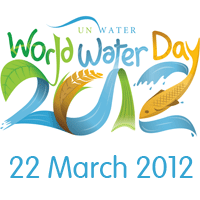 World Water Day 2012 – Water and Food Security: The world is thirsty because we are hungry
World Water Day 2012 – Water and Food Security: The world is thirsty because we are hungry
World Water Day (WWD) is held annually on 22 March. In 2012 WWD intended to focus international attention on the theme of ‘Water and Food Security’. The objective was to raise awareness on the relationship between water and food production and promote more sustainable food production and consumption patterns. It sought both to alert the world of the adverse global situation in water and food security, and to encourage decision-makers to seize opportunities to address global challenges. Through showcasing success, it aimed at encouraging decision-makers to initiate and sustain reforms and forward-looking approaches. FAO assumed responsibility for World Water Day 2012 coordination.
To know more...
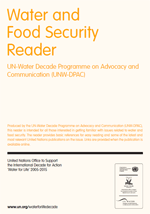 Water and Food Security Reader
Water and Food Security Reader
UN-Water Decade Programme on Advocacy and Communication (UNW-DPAC). March 2012
Produced by the UN-Water Decade Programme on Advocacy and Communication (UNW-DPAC), this reader is intended for all those interested in getting familiar with issues related to water and food security. The reader provides basic references for easy reading and some of the latest and most relevant United Nations publications on the issue. Links are provided when the publication is available online.
 United Nations World Water Development Report 4. Volume 1 ‘Managing Water under Uncertainty and Risk’
United Nations World Water Development Report 4. Volume 1 ‘Managing Water under Uncertainty and Risk’
United Nations Educational, Scientific and Cultural Organization (UNESCO), UN-Water, World Water Assessment Programme (WWAP). March 2012
The UN World Water Development Report 4 (WWDR4) provides a comprehensive assessment of the world’s water resources and, building on WWDR3, it elaborates on the interactions between water and the drivers of change. The issue of water and food security is addressed all along the report and chapter 2.1 specifically deals with ‘Water and agriculture’.
 (The) State of the World’s Land and Water Resources for Food and Agriculture: Managing systems at risk.
(The) State of the World’s Land and Water Resources for Food and Agriculture: Managing systems at risk.
Food and Agriculture Organization of the United Nations (FAO). 2011
This report examines the kinds of production responses needed to meet demand. It also assesses the potential of the world’s land and water resources to support these desired increases in output and productivity. Risks and tradeoffs are examined, and options reviewed for managing these without harm to the resource base. Chapter 1 analyses the current status of land and water resources together with trends. It assesses the biophysical and technical aspects of the resources and their use, and presents projections for the year 2050. Chapter 2 reviews current institutional arrangements, and assesses socio-economic and environmental impacts of current land and water management. Chapter 3 reviews current and future threats to land and water and their implications for a series of major systems at risk. Chapter 5 assesses the institutional responses at local, national and international levels, with an analysis of lessons for the future. Finally, Chapter 6 draws conclusions and advances policy recommendations.
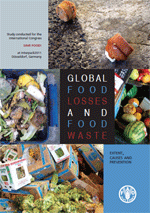 Global food losses and food waste. Extent, causes and prevention [
Global food losses and food waste. Extent, causes and prevention [ – 1.1 MB]
– 1.1 MB]
Food and Agriculture Organization of the United Nations (FAO), Swedish Institute for Food and Biotechnology (SIK). 2011
This study highlights the losses occurring along the entire food chain, and makes assessments of their magnitude. Further on, it identifies causes of food losses and possible ways of preventing them.
 Water for food. Innovative water management technologies for food security and poverty alleviation
Water for food. Innovative water management technologies for food security and poverty alleviation
[ – 1.7 MB]
– 1.7 MB]
United Nations Conference on Trade and Development (UNCTAD). 2011
This paper sets out the water and food security challenges in Least Development Countries (LDCs) and developing countries. The document explores the rainfed-irrigation nexus in different regions of the world, looks at the technology’s role and suggests some action actions that can be undertaken to improve water and food security and alleviate poverty.
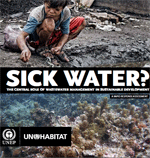 Sick water: the central role of wastewater management in sustainable development [
Sick water: the central role of wastewater management in sustainable development [ – 1.9 MB]
– 1.9 MB]
United Nations Environment Programme (UNEP), United Nations Human Settlements Programme (UN-Habitat). 2010
This report identifies the main threats to human and ecological health and the consequences of poor wastewater management and degrading sewage systems. The report also considers the implications for food security and how these may be influenced by issues such as population growth, urbanization and climate change. It also presents opportunities, where appropriate policy and management responses over the short and longer term can trigger employment, support livelihoods, boost public and ecosystem health and contribute to more intelligent water management. The chapter on ‘Wastewater, food security and production’ specifically tackles the complex relationship between water quality, agriculture and food security.
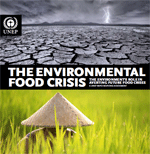 The environmental food crisis: The environment's role in averting future food crises. Chapter 4 [
The environmental food crisis: The environment's role in averting future food crises. Chapter 4 [ – 15.1 MB]
– 15.1 MB]
United Nations Environment Programme (UNEP). 2009
This report provides a summary of how climate change, water stress, invasive pests and land degradation may impact world food security, food prices and life on the planet and how we may be able to feed the world in a more sustainable manner.Chapter 4 ‘Impacts of environmental degradation on yield and area’ attempts to provide estimates of possible ranges of future impacts of water and land degradation on yield and available cropland.
 The Right to Food and Access to Natural Resources. Using Human Rights Arguments and Mechanisms to Improve Resource Access for the Rural Poor [
The Right to Food and Access to Natural Resources. Using Human Rights Arguments and Mechanisms to Improve Resource Access for the Rural Poor [ – 1 MB]
– 1 MB]
Food and Agriculture Organization of the United Nations (FAO). 2009
This publication explores the relationship between human rights — particularly the right to adequate food — and the access to natural resources. It does so through a conceptual analysis based on international treaties and instruments, and through two country studies – one from Mali and the other from the United Republic of Tanzania. Although this study considers access to natural resources, and although different resources and different resource rights are closely interrelated, the focus is on access to land. Access to related resources such as water, grazing and forests is also touched upon.
Food security around the world
Africa
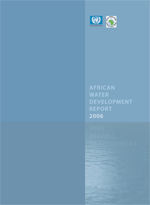 African Water Development Report. Chapter 8
African Water Development Report. Chapter 8
[ – 502 KB]
– 502 KB]
United Nations Economic Commission for Africa (UNECA), UN-Water. 2006
Chapter 8 of the African Water Development Report ‘Water for Food Security’ focuses on the importance of securing the food supply to enhance food security, particularly of the poor and vulnerable, through more efficient mobilization and use of water and more equitable allocation of water for food production. It also presents data and statistics from Africa concerning under-nutrition and food production, and the lack of access to safe, sufficient and clean water.
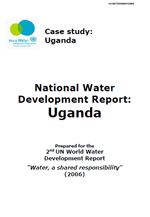 National Water Development Report: Uganda. Prepared for the 2nd UN World Water Development Report. Chapter 7
National Water Development Report: Uganda. Prepared for the 2nd UN World Water Development Report. Chapter 7
[ – 3.06 MB]
– 3.06 MB]
Directorate of Water Development, World Water Assessment Program (WWAP). 2005
Chapter 7 ‘Water and Food Security’ of this report focuses on the persistent food shortages and critical nutritional deficiencies often experienced in many parts of Uganda. Under-nourishment, especially in childhood years, is unacceptably high and periodic famine has become a common phenomenon in many parts of the country. This publication shows the national programmes aimed at addressing, among other, constraints to food production, processing, storage and marketing of agricultural products, and improvement of general national food security.
Asia
 Sustainable agriculture and food security in Asia and the Pacific [
Sustainable agriculture and food security in Asia and the Pacific [ – 2.8 MB]
– 2.8 MB]
United Nations Economic and Social Commission for Asia and the Pacific (UNESCAP). 2009
This study examines the environmental, economic and social challenges that are the roots of the region’s food insecurity and suggests a regional framework of action to be taken by governments and the international community in order to create greater food security.
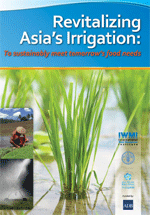 Revitalizing Asia’s Irrigation: To sustainably meet tomorrow’s food needs [
Revitalizing Asia’s Irrigation: To sustainably meet tomorrow’s food needs [ – 6.2 MB]
– 6.2 MB]
International Water Management Institute (IWMI), Food and Agriculture Organization of the United Nations (FAO). 2009
This document shows the past and future trends of irrigation in Asia while proposing investment strategies which include examples of good practices and lessons learned. The main objective of this publication is to propose a comprehensive strategy to improve the performance of Asia’s irrigated agriculture and thus satisfy the growing demand for water and food.
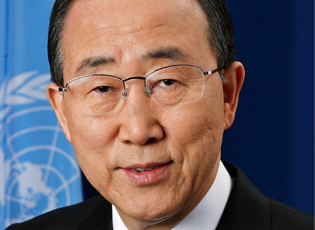
"Over the coming decades, feeding a growing global population and ensuring food and nutrition security for all will depend on increasing food production. This, in turn, means ensuring the sustainable use of our most critical finite source water"
Ban Ki-moon
UN Secretary General
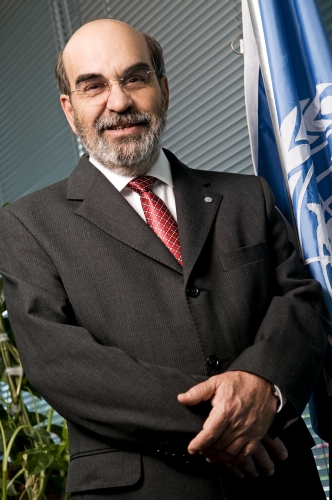
"Hunger eradication should not be separated from responses to other global challenges, such as reviving national economies, protecting natural resources from degradation, and mitigating and adapting to climate change"
José Graziano da Silva, FAO Director General

>> Water and agriculture in the Green Economy
[ - 236 KB]
- 236 KB]
This information brief introduces the main challenges, opportunities and key facts related to water and agriculture in a green economy.
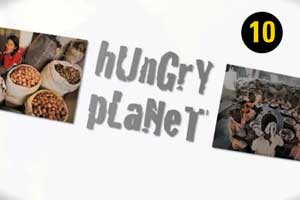
>> Hungry planet series
In this series, the UN's three food agencies - FAO, WFP and IFAD - take us around the globe in search of answers to some of the most pressing questions related to hunger and food security.
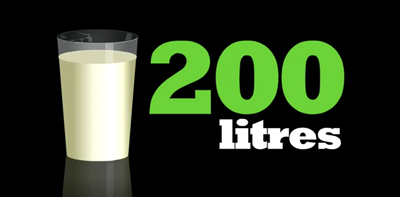
>> All you eat
FAO, the coordinating agency for World Water Day 2012, has produced a short educational video to help promote awareness on how much water is required to make the food we eat.

>> Interview with Kostas Stamoulis
Director of Agricultural Development Economics Division at FAO.
UNTV 21st Century
Year: 2011
Duration: 3min21sec
High and volatile food prices make poor farmers, consumers and countries more vulnerable to poverty and food insecurity. Kostas Stamoulis talks about the impact of price swings and what can be done mainly in developing countries.
>> FAO Photo Gallery. Nepal: helping poor farmers grow more food
>> FAO Photo Gallery. Achieving Food Security in Times of Crisis
>> FAO Photo Gallery. World food security: the challenges of climate change and bioenergy
Copyright | Terms of use | Privacy notice | Site Index | Fraud alert | Help





